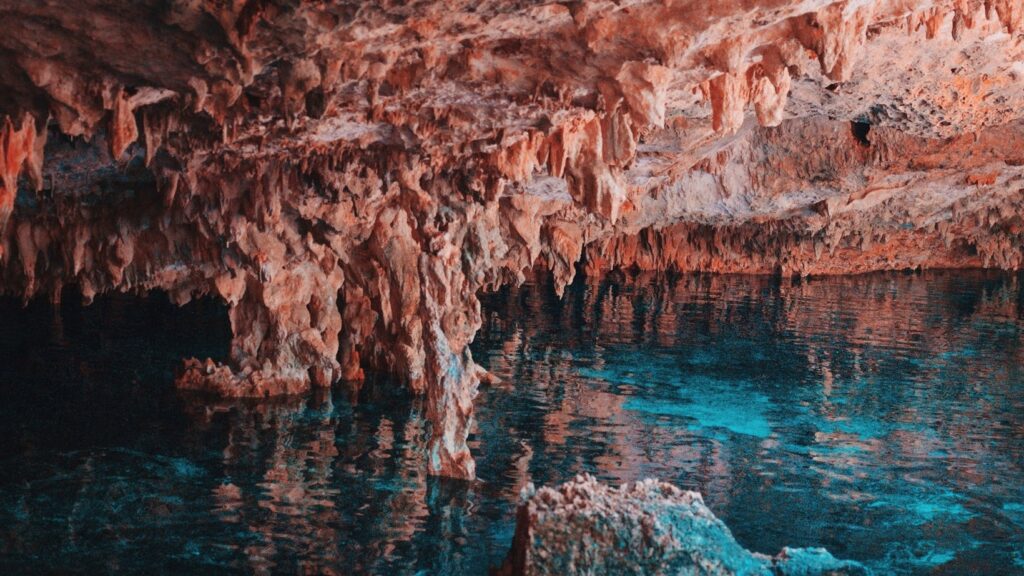Plunging into the depths of the world’s oceans, adventurers find themselves immersed in a realm of silence and mystery. This is the world of underwater cave exploration, a pursuit that combines the thrill of diving with the allure of spelunking. It’s a journey into the unknown, where every turn can reveal breathtaking natural wonders or pose unexpected challenges.
Underwater Cave Exploration
Underwater cave exploration pulls back the dark veil of the unknown, shining a light on a previously hidden, enthralling world. Submerged caves are treasure troves of information – frequently exhibiting extraordinary geological formations such as stalactites and stalagmites, they’re potent laboratories of Earth’s history. For instance, Mexico’s Yucatan Peninsula, replete with submerged cave systems, offers valuable insights into planetary evolution.

Moreover, underwater caves harbor unique, rare ecosystems. Florida’s freshwater caves, home to diminutive troglobitic crayfish and blind salamanders, exemplify this. Such biodiverse habitats expand our comprehension of life’s adaptability, critically contributing to scientific research.
Yet, exploring these uncharted territories isn’t without risks. Treacherous currents, low visibility, equipment failure are common perils that explorers face. Training, preparation and adhering to safety protocols are vital in reducing the inherent risks.
Thus, underwater cave exploration embodies a daring pursuit for knowledge, fraught with risks yet abundant in rewards. It’s a journey into the unknown, discovering secrets that lie beneath the ocean’s surface.
The Science Behind Underwater Cave Formation
Cave development beneath the water’s surface is a fascinating result of Earth’s tireless geological processes. Predominantly, the formation of these submerged caverns involves soluble rocks like limestone and dolomite. Water, particularly acidic in nature, seeps into the cracks and fractures of these rocks, gradually dissolving them over thousands of years. This process, known as karstic erosion, leads to the creation of extensive networks of caves and passages.
Along with karstic erosion, glacial activities are significant contributors to underwater cave formation. Melting glaciers generate enormous volumes of water, strong enough to carve out underground channels, creating subglacial caves. For instance, Russia’s Ordinskaya Cave, brimming with clear, freezing water, is a legacy of the last glacial age.
Sea caves, however, form quite differently. Constant wave action against coastal cliffs and headlands erodes the rock, producing these beneath-the-tide caverns.

Remarkably, Optical Illusion Cave in Hawaii, carved by the Pacific’s relentless waves, exemplifies a sea cave’s splendor.
The Adventure of Underwater Cave Exploration
- Exploring the Majestic Underworld: It’s a unique amalgamation of excitement and sophistication. Underwater cave explorers encounter an array of otherworldly life forms, like blind cavefish adapted to perpetual darkness, and intriguing rock formations that tell stories of Earth’s geological past. Just as every grain of sand on a beach contributes to a bigger picture, each exploration contributes to a broader understanding of our planet.
- Embracing the Risks: For all their beauty and mystery, underwater caves present considerable challenges. Divers negotiate labyrinthine passageways, eyes riveted on ever-changing depth and pressure gauges. They tackle an environment that tests not just their physical stamina, but their psychological resilience and decision-making skills too.
- Necessity of Proper Training: No venture into an underwater cave begins without thorough preparation. Topography maps guide explorers, while meticulously calibrated gear ensures their safety and their ability to document discoveries. Rigorous training is often conducted in environments made to mimic the strenuous conditions of underwater caves.
- Advancements in Underwater Cave Exploration: It’s not just the explorers who’ve evolved in this adventurer’s endeavor; technology has paced up equally. Advancements in equipment, like rebreathers and bright LED lights, have enhanced the explorers’ safety and extended their potential exploration time. High-resolution 3D mapping facilitates detailed investigation of cave systems, while underwater drones and rovers enable remote exploration, taking underwater cave exploration to unimagined depths.
- Contribution to Science: Often lost amidst the tales of daring and discovery is the considerable contribution of underwater cave expeditions to science. Each cave system serves a trove of geological, archaeological and biological information. Features like stalagmites and stalactites reveal clues about climatic variability, while remains of extinct species echo the voices of a prehistoric past. This thirst for knowledge transforms every cave explorer into a true adventurer.
